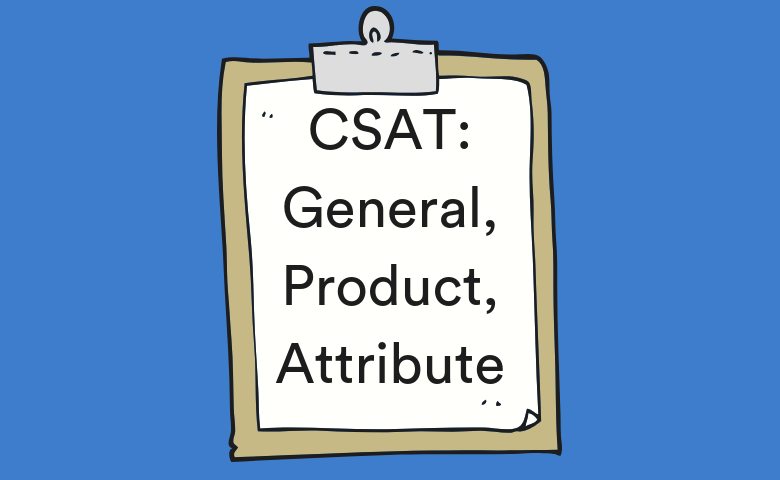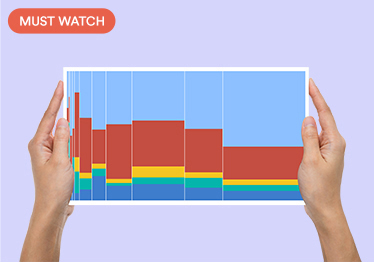
Customer Satisfaction: General, Product, & Attribute Questions

Measuring customer satisfaction particularly useful when you can action that data to improve your customers' experience. Rather than just measuring one type of customer satisfaction, it's useful to measure these three aspects of customer satisfaction. This will help you to gather insights which are directly actionable and conduct a driver analysis.
General satisfaction
A customer's general satisfaction is their satisfaction with your brand or company as a whole. This is also known as their relational satisfaction, as it refers to a customer's overall relationship with your brand. This is the measure that the American Customer Satisfaction Index (ACSI) uses in their annual reviews. The general Customer Satisfaction question is a good customer feedback survey question because it measures someone's overarching attitude towards your brand, rather than their specific experiences with a product or service. In some ways, this question is similar to the NPS question, since it is attitudinal rather than specific. Your general satisfaction score gives you an idea of where you sit, which provides a good benchmark for more specific measures.
Product/service satisfaction
This measures a customer's satisfaction with a specific product or service. For example, if the general customer satisfaction measures somebody's satisfaction with Apple, this question measures their satisfaction with the iPhone. This is the first step in "drilling down" into a general satisfaction measure. Measuring how satisfied customers are with individual products means you can compare across products. It also allows you to identify whether certain products have a significantly lower satisfaction rating than others or the brand overall. This is also a good place to identify services which may need improvement, such as a website or customer support. This is known as transactional satisfaction, as the sentiment measured here is related to a specific transaction or experience a customer has recently had.
Attribute satisfaction
This question gets right down to the nitty-gritty details and asks about the customer's satisfaction with particular features (attributes) of a certain product. In the Apple example from earlier, this question would ask about satisfaction with the iPhone's screen, battery life, or audio quality (for instance). This is the most granular of these three measures. This question allows you to drill down even further into your customer satisfaction ratings.
Why do we need all three?
Asking about just one type of customer satisfaction could tell you something about how satisfied your customers are. However, what it can't tell you is why they are or are not satisfied, and what you should do to improve. This is where combining these three types of questions comes in handy! Gathering data about customer satisfaction throughout different levels will point you to what is making your customers dissatisfied. This data will allow you to conduct a driver analysis.




